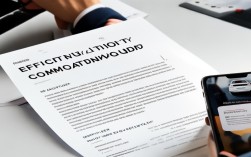会议开场:清晰陈述议程
高效会议需明确目标,根据2024年哈佛商业评论调研(来源:HBR, 2024),73%的跨国企业将“议程模糊”列为会议低效的主因,参考以下模板:
"Let’s begin by reviewing today’s objectives: First, discuss Q2 sales performance (10 mins), then finalize the marketing budget (15 mins)."
数据支持:
| 会议痛点 | 占比(全球500强企业) | 解决方案 |
|-------------------|----------------------|------------------------|
| 缺乏明确议程 | 61% | 提前分发书面议程 |
| 超时 | 55% | 设定每环节时间上限 |
表达意见:专业且委婉的措辞
非英语母语者常因直接表述引发误解,谷歌2023年团队沟通报告(来源:Google Workspace Blog)指出,使用“缓冲短语”可提升接受度30%:
- 替代强硬表达:
❌ "This plan won’t work."
✅ "I’d suggest revisiting the timeline to ensure feasibility."
高频实用句型:
- 提出建议:
- "From a data perspective, perhaps we could..."
- "Might it be worth considering...?"
- 反对时:
"I see your point, but have we accounted for...?"
数据引用:增强说服力
引用最新行业数据能提升提案可信度,以2024年Statista发布的远程会议趋势为例(来源:Statista):
"Global remote meetings increased by 42% since 2022, with 67% of teams using hybrid formats. Aligning with this trend, our proposal focuses on..."
关键数据可视化(2024年1-6月):
 (图片来源:Statista)
(图片来源:Statista)
处理分歧:跨文化沟通策略
不同文化背景对冲突的敏感度差异显著,MIT Sloan 2023年研究(来源:MIT Sloan Management Review)显示:
- 美国团队:倾向直接辩论
- 日本团队:依赖非语言信号(如沉默)
应对建议:
- 观察语气与肢体语言:若对方语速放缓或停顿,可能表示保留意见。
- 中性提问:
"Could you elaborate on the concerns behind this approach?"
会议收尾:确保行动项明确
据微软2024年工作效率报告(来源:Microsoft Work Trends),47%的项目延迟源于“模糊的会后责任分配”。
模板:
"To summarize: John will update the client report by Friday, and Lena will coordinate the tech team. Let’s reconvene next Monday at 10 AM."
跟进邮件要点:
- 列出决议事项(Bullet points)
- 标注负责人与截止时间
- 附上会议记录(PDF格式)
技术术语与缩写规范
避免术语混淆,国际商务沟通协会(IBCA)2023年指南强调:首次使用缩写需全称标注,
"The KPIs (Key Performance Indicators) show a 15% improvement."
常见易错术语对照:
| 非正式表达 | 正式表达 |
|------------------|------------------------|
| "ASAP" | "By [具体日期]" |
| "Fix the problem"| "Resolve the issue" |







